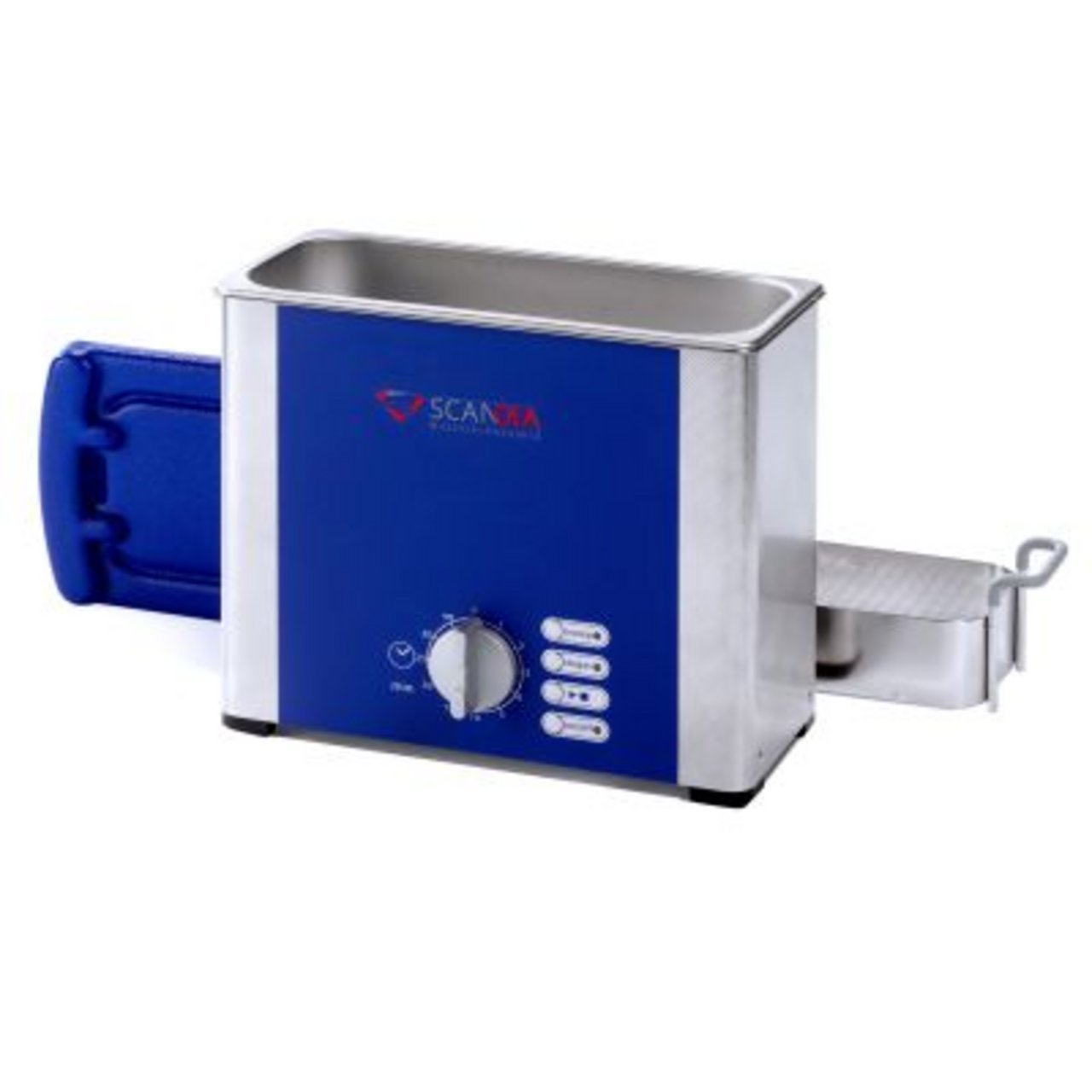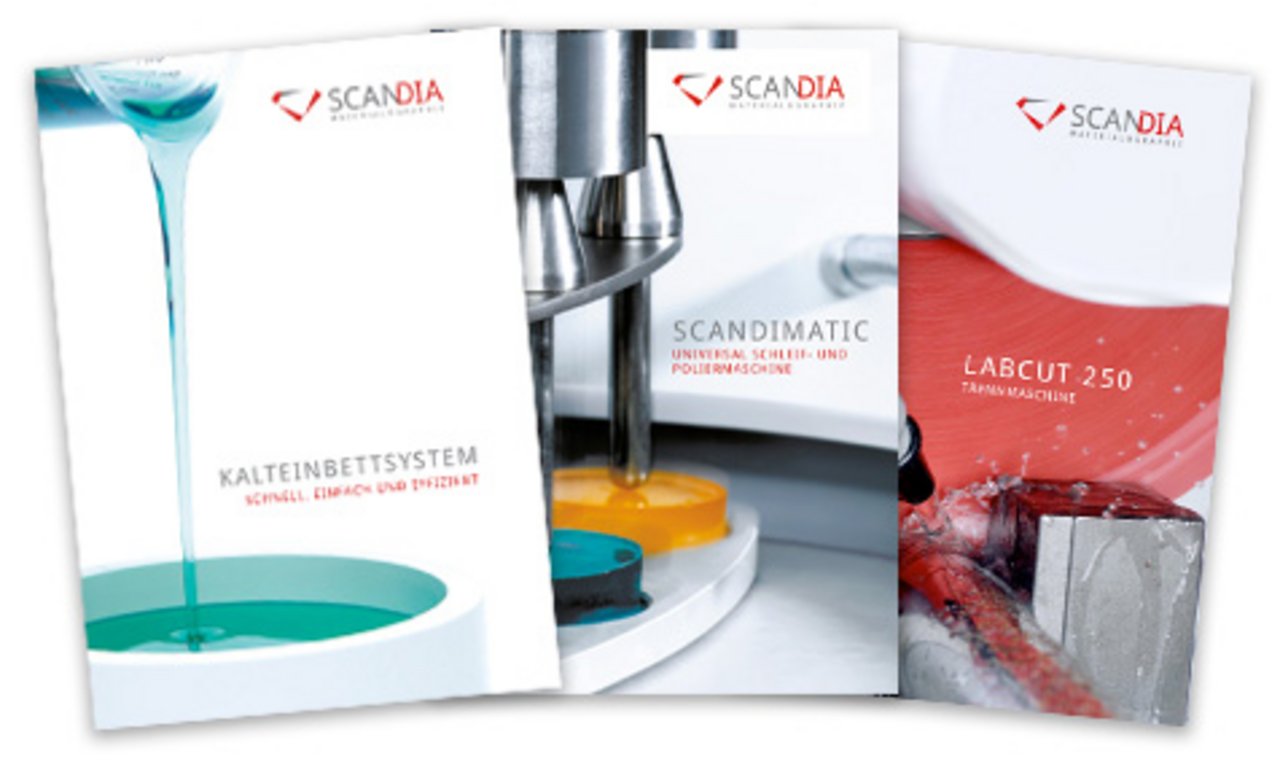The metallographic cleaning process places specific demands on the cleaning agents used. In order to obtain gap-free polished samples, the materialographic sections have to be cleaned and degreased before they are embedded. Moreover, only optimal sample cleaning during and at the end of the preparation process ensures precise results.
Rinsing the sample under warm water after each grinding and polishing step and removing abraded particles with wet cotton wool is recommended. In order to prevent new scratches from developing, the wet cotton wool is just slightly brushed over the section's surface.
A sustainable and efficient grinding and polishing process can only be ensured if the spreading of coarser grinding and polishing grains during the subsequent finer preparation step is avoided. For that purpose, the sample is to be cleaned in an ultrasonic cleaning deviceafter the final grinding step as well as in between each polishing step.
SCAN-DIA offers an extensive range of high quality ultrasonic cleaning equipment.Cleaning accessories such as cleaning cotton wool and squeeze bottles are likewise adapted to the requirements of metallographic cleaning.
SCAN-DIA products for metallographic cleaning ensure ideal cleaning processes for every single preparation step.
Information
In the field of materialography, part of materials sciences, the structure of ferrous and non-ferrous materials (such as composites, ceramics, and plastics) is studied.
"Metallography" is the study of purely metallic materials.
Materialography wants to quantitatively and qualitatively analyze microstructures by means of various microscope technologies. Statements are made relating to the microstructure as well as to the properties of a material.
First step of the work process is the sample preparation. A material sample is prepared for the microscopic examination of its crystalline structure.
A scratch-free polished section providing a sharp and smooth sample surface is produced, allowing for a representative observation of the material structure. During the preparation, it is particularly important to avoid deformation, smearing, or scratches. Therefore, precise working is required using high quality grinding, polishing, and cleaning agents. Furthermore, depending on the observation criteria, the section may be etched using various solutions.
In general, the materials scientist needs a broad knowledge of material properties, material production, and further material processing in order to avoid preparation errors and errors during the structural analysis.
Materials scientists work in the fields of quality assurance, in failure analysis, and in the research and development domain.
The microscopic examination of the materials provides important conclusions on the production conditions and thus helps to assess production processes as well as to shed light on cases of failure. Moreover, the results of materialographic research build the basis for the development of new materials that are optimally adapted to their respective operating conditions.
Contact
Our experts are happy to answer your questions. SCAN-DIA has a dedicated team of professionals who provide in-depth expertise to offer you personalised support and ensure you get the best possible solution.
Whether you have questions about SCAN-DIA products, technical problems or industry issues, don't hesitate to call. They will be happy to help you with your concerns.




